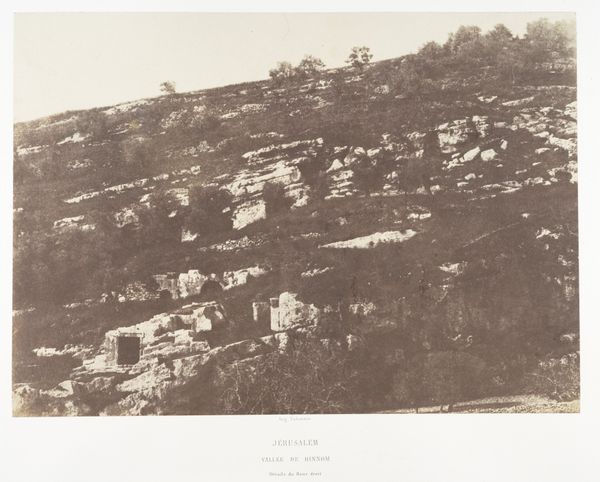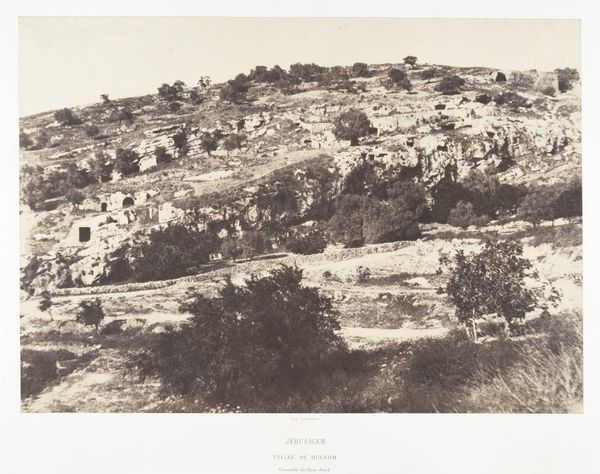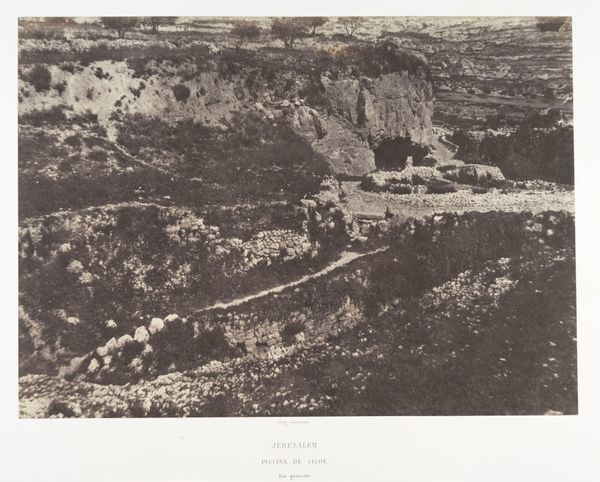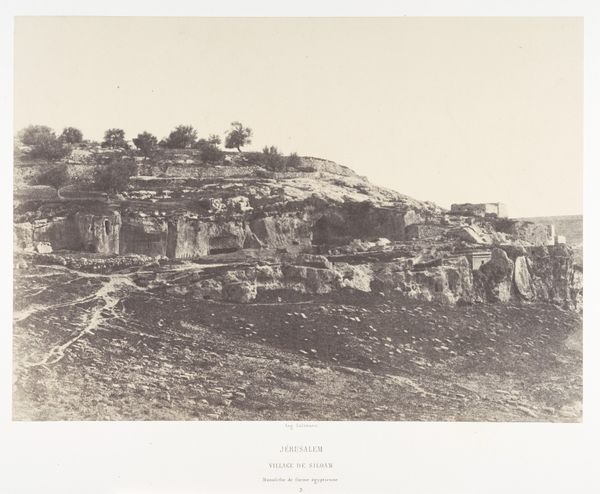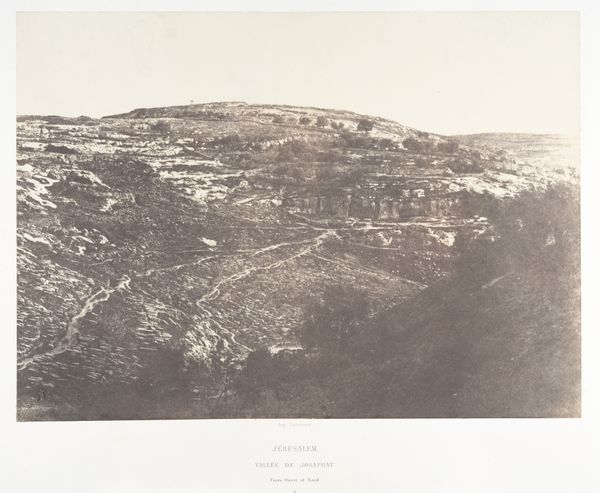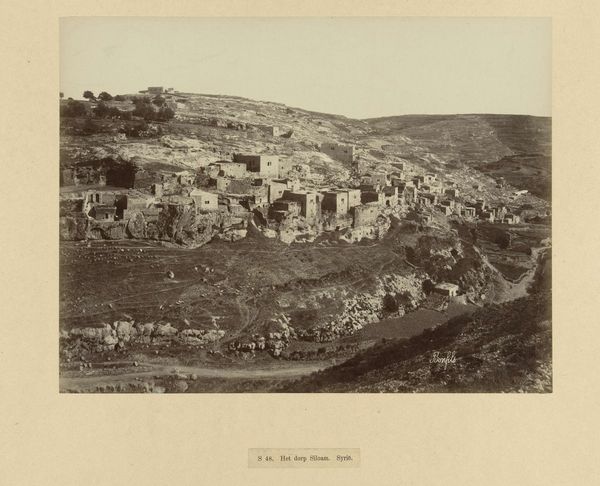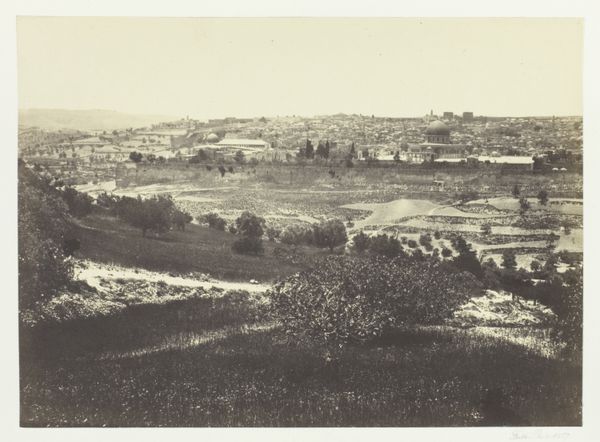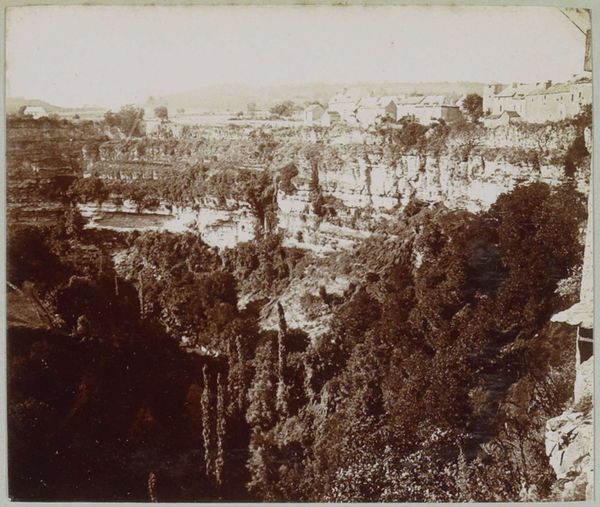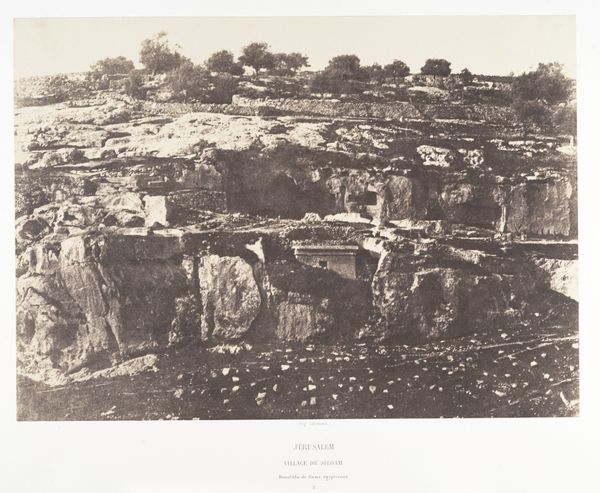
Jérusalem, Vallée de Hinnom, Détails du flanc droit, 2 1854 - 1859
0:00
0:00
photography
#
16_19th-century
#
landscape
#
photography
Dimensions: Image: 23.5 x 33 cm (9 1/4 x 13 in.) Mount: 44.6 x 49.7 cm (17 9/16 x 19 9/16 in.)
Copyright: Public Domain
Editor: Here we have Auguste Salzmann's "Jerusalem, Vallee de Hinnom, Details du flanc droit, 2" taken sometime between 1854 and 1859. It's a photograph, and the textures of the rock face really stand out. It feels incredibly structured. What catches your eye in terms of its composition? Curator: The composition relies heavily on contrasting textures and tones. Consider how the dense foliage in the foreground gives way to the stark, light-colored rock face. Note the artist's emphasis on verticality, drawing our gaze upwards. The strategic placement of light and shadow shapes the overall form. The eye navigates through a calculated progression of masses, a carefully orchestrated display. Editor: So you're seeing the contrast between light and dark as a key element structuring the work. But doesn’t the photographic medium itself – the way it captures light and shadow – also contribute significantly to this structure? Curator: Precisely. The medium dictates how the contrasts will register, highlighting the structure inherent in the landscape. Salzmann uses the capabilities of photography to investigate how light and shadow interact, ultimately directing the eye's path through the work. Note the sharp clarity in some sections against the softer focus in others. This directs how one interprets form. How does the structural tension between the different parts of the landscape impact its meaning, in your view? Editor: It's as though the photograph makes the landscape feel so monumental but also so fragile at the same time, just through the composition and contrasting elements. I’ll certainly view landscape photography with new appreciation. Curator: Exactly, consider too how Salzmann frames his composition. Structure is not simply what you see, but also how you are made to see it.
Comments
No comments
Be the first to comment and join the conversation on the ultimate creative platform.
